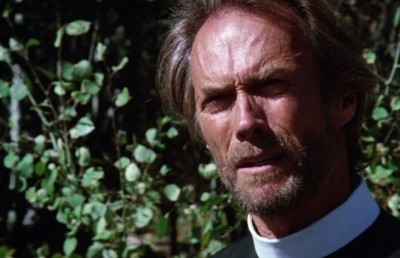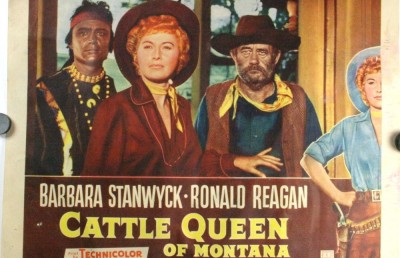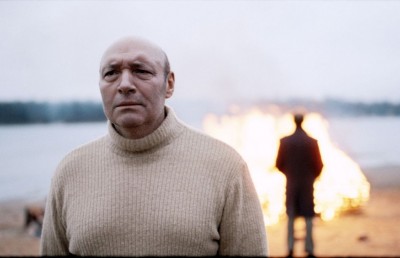Revisiting Stella Dallas from a cognitive theory of film perspective
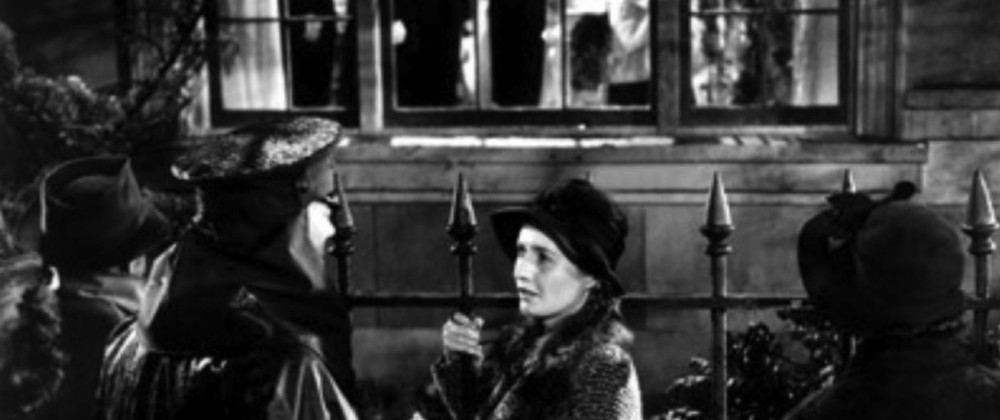
Abstract
Different approaches address melodrama from different perspectives and usually focus on different aspects of a melodramatic production. Most of the approaches rely heavily on theories in ways of understanding melodrama. A cognitive theory of film focuses on the way audiences in general perceive a film. Staying within the framework of a cognitive theory of film, I have analyzed audience’s comments on Stella Dallas (1937) found at Amazon customer’s review. The analysis is supported by a close reading of the last sequence of the film.
Introduction
Melodrama is a genre that is popularly known to contain intense displays of emotion. Film scholars understand melodrama as signifying more than what our eyes may observe upon immediate encounter with the melodramatic production, especially when viewed through different theoretic lenses. Film theories using psychoanalysis lean to Freudian and to some extent Lacanian concepts of psychoanalysis (Mary Ann Doane, Linda Williams), revealing meaning quite different from, say, a socio-historical perspective (Ben Singer, W. Dissanayake). A Marxist perspective may seek to find class conflict, hidden or manifest, in the melodrama films, whereas a feminist perspective (E. Ann Kaplan) will pay major attention to understanding melodrama with gender in mind. At times these perspectives may contradict each other in the way they weave arguments, but, nevertheless, they all contribute to enhancing our understanding of the melodrama and therefore to transcend the popular prejudice of underrating melodramatic production.
Traditionally, approaches to understanding melodrama have tended to rely heavily on theories that may sometimes eclipse a cognitive understanding of these films. A cognitive perspective of film attempts to study how audiences read a film in a general sense. In this essay I will use a cognitive framework to examine how Stella Dallas articulates and portrays a particular emotion perceived by a case study audience. The limitation of such work is that not much empirical work has been done in the area of audience analysis and cognitive theory (or indeed in general). I will begin with a detailed discussion on cognitivism and the cognitive film theory, which will be followed by a number of audience comments retrieved from the page on Stella Dallas at Amazon.
Cognitivism and a Cognitive Theory of Film
Cognition is a collective term for the psychological processes involved in the inquisition, organization, and use of knowledge. Originally, the word distinguished the rational from the emotional and impulsive aspect of mental life. It passed out of currency only to be revived with the advent of computer thought process simulation. The term is now used to refer to all the information-processing activities of the brain, ranging from the analysis of immediate stimuli to the organization of subjective experience. In contemporary terminology, cognition includes such processes and phenomena as perception, memory, attention, problem solving, language, thinking, and imagery.
Cognition, in the course of being used in different disciplines, has slowly drifted away from the idea of the mind as input-output device that processes information and toward the idea of mind as an emergent and autonomous network. Thus, cognition is not studied as inner versus outer worlds but rather as embodied action. Therefore, cognition depends on the kinds of experience that come from having a body with various sensor motor capacities. Further, these individual sensor motor capacities are themselves embedded in a more encompassing biological, psychological, and cultural context. Seeing cognition in this way is known as cognition in the wild or distributed cognition (E. Hutchins). When applying cognitive principles to the observation of human activity ‘in the wild’, at least three interesting kinds of distribution of cognitive process become apparent:
1) cognitive process may be distributed across the members of a social group
2) cognitive process may be distributed in the sense that the operation of the cognitive system involves coordination between internal and external structures, and
3) processes may be distributed through time in such a way that the products of earlier events can transform the nature of later events.
While mainstream cognitive science looks for cognitive events in the manipulation of symbols (Newall, et al.), or patterns of activation across arrays of processing units (Rumelhart, et al.) inside individual actors, distributed cognition looks for a broader class of cognition events and does not expect all such events to be encompassed by the skin or skull of an individual. The roots of distributed cognition are deep, but the field came to be under its current name in the mid-1980s. Now, over a period of twenty years of development, distributed cognition has gained a strong grounding and paved the way for other disciplines, including film studies, to benefit from the use of cognition and cognitivism in their field’s projection of human communication.
Since the beginning of the 1970s, as computer science experienced a revolutionary breakthrough and linguistics became more liberal in borrowing approaches from psychology, cognition became an important means to understand human communication. The use of cognition, framed as a perspective called cognitivism, has gained an interdisciplinary diffusion, including film studies. David Bordwell, Noël Carroll, Joseph D. Anderson, Gregory Currie and other film scholars have proposed a cognitive perspective that film theories may adopt. Cognition, as a tool for defining and understanding film, developed out of the realization that existing theories used a perspective aimed at interpreting film from a number of broader theoretical frameworks that did not map the way people viewed films in their everyday lives. Therefore, what was necessary was an alternative perspective that would explain film as an intriguing dialectic of narrative mediation and visual immediacy. We experience film as a part of the flow of our mundane lives and in life we spend a significant amount of time in experiential and conceptual connections that evoke emotion, pleasure, and thought. Experiential and conceptual connections are the basis of our cognitive minds that guide our perception and comprehension of the lived world.
Film theories developed through three phases (K.L. Stoehr, 2002, p. 7-10): classical film theory (realism, formalism, neo-formalism, etc.), theory triggered by hermeneutics (semiotics, psychoanalysis, and political ideologies of Marxism and feminism), and cognitivism. While classical theories concentrated mainly on how technology is used to construct cinematic narration, which is best observed in the way the Russian school of montage differed radically from the French school of photognie, the second wave of theory triggered by hermeneutic approaches focused on interpreting film from a socio-ideological standpoint. Film was thus understood as a representation of a macro ideological domination and as such individual mental representation did not have any place. This approach achieved an almost cult-like popularity due to the spread of psychoanalytical and Marxist thinking that dominated the intelligentsia of the 1960s. The hermeneutic approach was especially energized by borrowing concepts from what Bordwell defined as SLAB theory, works “based upon Saussurian semiotics, Lacanian pyschoanalysis, Althusserian Marxism and Barthesian textual theory” (Bordwell, 1989, p. 385). SLAB theory aimed at allegorizing and interpreting texts in a metalanguage derived from a theoretical doctrine. Thus, the approach involved the critic in a constant flow of theory-driven reconstructions of myths and narratives that did little to consider human mental processes as a connector of experiential and conceptual domain of everyday life. Instead, SLAB theory interpreted film solely as the representation of a broader ideological dominance. In such a scenario the filmmaker and audiences capacity to accomplish intentional acts, and action that is done deliberately and recognizes semantic content, are denied. As well as film as a distinct medium of organizing representation; SLAB theory does not illuminate nor investigate the way surrogating, – i.e., how particular shots, compositions, and camera movements serve to represent the world on the screen – is experienced by the audience (Bordwell, 1989, pp. 379-381). Consequently, the hierarchy of film perception, how the visual processing system works – how films are perceived, and how films are understood – which are the same basic perceptions in natural settings, remains unexplained.
Warren Buckland (1995) sees the evolution of film theory as a progression from an intentional semantic to a pragmatic theory of filmic meaning. This demands attention towards the spectator’s competence of film viewing. Buckland, while discussing Michel Colin’s rereading of Metz’s semiological theory and transforming it into a cognitive semantic, asks the question: “Does the film semiologist, like the TG grammarian, formalize the spectator’s competence, or do his/her semiological tools create a simulacrum – a methodological framework completely divorced from the spectator’s mental structures in processing a film? Such a question addresses the adequacy of film semiology to a mental reality” (p. 53). However, mental reality is not a domain divorced from physical existence and neither is it disconnected from the ecology that borders and shapes our perception, action, and understanding of the real world. Mental reality, in conjunction with innate potential, developmental history, and the external environment, is also the generator of emotion, which is not properly understood by the “theory triggered” approach of film theory. Therefore, as an alternative, the cognitive perspective of film theory views film from a mental state that is governed by intentionality. It deals with both mental processes and structures that produce audience responses, and the external environment that comes into interaction with and shapes mental reality (Bordwell, 1985, 1989).
The use of psychology to understand the mechanism of film viewing is anything but new. It goes back to Hugo Münsterberg (The Photoplay. A psychological study, 1916) whose objective for film studies was to search for an insight into the means moving pictures use to impress and appeal to us. For Münsterberg the physical means and technical devices were not in question, but the mental means were. He sought to understand what psychological factors were involved when we watched actions on screen (identified as ‘depth and movement’, ‘attention’, memory and imagination’ and ‘emotions’). Later, in 1933, Rudolf Arnheim (Film as Art) followed this path using gestalt theory in understanding film. This was the basis for later film theoreticians who saw the importance of cognitivism for unraveling the mystery of film. Cognitivism, now a fast developing approach in film theory, rejects dominant views in film studies: Saussurean linguistics, Metz’s semiotics, and psychoanalytic accounts of neurotic viewer responses to, or the ideological victimization of films. As an alternative to psychoanalysis, cognitivists posit fairly universal psychological structures which have evolved in humans that are relevant to viewing films, and they rely upon recent empirical approaches to describing relevant psychological structures. Virginia Brooks’ 1984 essay “Film, Perception, and Cognitive Psychology” was one of the first to offer a general account of cognitive ideas applied to film analysis.
Noël Carroll’s point of departure for a cognitive approach to film theory lies in his understanding of psychoanalysis as the study of the irrational, which he does not find matches the world represented in films (unless of course as direct filmic content may represent the irrational, as in horror films). Rather, in understanding the viewing experience of cinematic mimetic signification, cognitivists prefer to speak of recognizability as an inherent human rational capacity. A mimetic film image is a representation of x and the spectator recognizes the representation, the image, as a representation of x. The recognition of a film image as a representation is a presupposition of spectatorial perception and comprehension. A cognitivist film theoretician does not complicate the field by trying to understand human comprehension of film as a process of interpretation governed by theories. Contemporary film theories seem to rely on a number of theoretical models to obscure the natural capacity of the spectator’s comprehension of screen images.
The core of cognitive theory rests in its concern with normal and successful action rather than Freudian deviation like psychoanalysis. It aims at understanding the ordinary comprehension of human actions that consist of recognition, comprehension, inference making, judgment, memory, and imagination. Cognition explains both intelligible (involuntary) and intentional (voluntary) actions in order to understand the mentation process of the two and rejects a strong behavioristic account of human actions. Bordwell (1985, p. 30-47) further describes intentional acts (purposive and rational acts) as action that is done deliberately, and views intentional acts as directed at objects. Mental states that have intentionality and possess semantic content require a concept of mental representation. Therefore, Bordwell’s main questions are:
-How can mental activity be considered representational? and
-How can it have intentionality -how is it meaningful?
Mental process, for Bordwell, produces meaning through a causal, functional, or teleological explanation of the objects to which one is directed. This can be explained from a naturalizing epistemological standpoint; so it is not a hermeneutic grid to tell a story, and therefore cannot be allegorized. Perception is the key to cognition, which is executed in two-directional ways:
1) Bottom-up: fast and mandatory activities, which are usually sensory and basically data-driven.
2) Top-down: deliberative volition activity, which is mainly concept driven.
Both processes execute inference making and go beyond information given in determinate ways. Perception has a linear process that involves description, problem solving, and inference, and thus the act of representation and the way it attains intentionality and makes meaning is actually a process of construction.
Mental representation, in a constructionist fashion, occurs at two levels: prepositional (language of thought/mentalese) and imagistic mental constructs, and has the following aspects:
a) Semantic content: what is it ‘about’.
b) Structure of the representation: conceptual relations.
c) Processing: top-down and bottom-up activities.
Mental representations are structured and processed in the context of community. That is why the cognitive perspective of information is communal and considers language a vast public symbolic system. Cultural knowledge is organized by intersubjective schemata, scripts, or ‘mental models’ which means that social action is mediated by mental representations that enable groups to organize cultural life.
Bordwell’s cognitive approach to film attempts to be encompassing. It examines the physiological organs for perception while also referring to the concepts and conventions one learns from culture in a historical way. His “distributed cognition” approach sets him apart from other cognitivist film scholars. For example, Carroll (Carroll, 1996, 37-68) asserts that recognition takes place without inferential maneuvers, and that recognition is more analogous to a reflex process than to a reading process. However, according to Bordwell (1985), sensory stimuli alone cannot determine a precept, since they are incomplete and ambiguous. Seeing is not absorption of stimuli, rather, it is a constructive activity that involves various purposes, expectations, and hypotheses. Everything from recognizing objects and understanding dialogue to comprehending a film’s overall story utilizes previous knowledge.
A cognitive theory of film, as developed by Bordwell and which qualifies as embedded cognition or cognition in the wild, understands representation and its meaning as an overlap and juxtaposition of our inner potential and external environment, which also has a developmental history for the particular way we organize representation and make it meaningful. Film as an audio-visual medium for representation is a mediated means through which the three dimensional world is organized onto a two dimensional screen. Film is experienced as a process of combining our immediate and dynamic cognition with mediated representation. Thus film viewing ultimately becomes a dialogue between the schemata that constructs our mental model and the world audio-visually represented on the screen. In a nutshell, a cognitive perspective of film views film as an organized representation, framed by the flexibility and the constraints of the medium, while recognizing the way mental models guide us to understanding a story, a feeling, an emotion, a pleasure, or a thought. Cognitive perspective is a process of writing and reading; we write a world that is composed of different kinds of information, and we read that world, i.e., we decode the information.
Film is a mediated representation of the world as cognized by a filmmaker. It is an audio-visual representation organized into a chain of shots, sequences, and sounds. Every unit, shot or sequence, contributes to structuring the feel or message that the film intends to represent. It elicits pleasure, feeling, and sometime invokes intellectual thought in a receptor’s mind, as the receptor reflects on the film as a cognitive agent.
Another feature that makes film unique among mediated representations is its ability to appeal to the receptor’s mind by invoking an immediate cognitive reaction. Film, as screened at movie theatres, does not allow us to pause viewing and as such we follow it as a continuous happening for a limited time, much like events taking place in our daily lives. This makes experiencing film more like an immediate experience that one may encounter in daily life. Film appears as a flow of information that usually has an emotional appeal to us from which meaning emerges to a cognitive mind. Film appears as a dialectical tension between the “given-ness” of cinematic images and the temporal and dynamic nature of film as a process of moving pictures (Stoehr, 2002, p. 3). Put differently, film presents an intriguing dialectic between narrative mediation and visual immediacy. We reflect thoroughly upon perceived images while perceiving present images, and at the same time prepare ourselves to perceive images of the immediate future. Our perception of past, present and future images are assembled into a whole by the aid of a mediated judgment shaped by biography, context, mood, reason, and imagination. Both immediate perception and mediated judgment are cognitive acts made possible by the help of recognizing patterns with the help of schemata, and lumping and discriminating these patterns into classes in a concept guided boundary.
A cognitive analysis of film emphasizes the emotional structure embedded in the film and the potential appeal of this emotion to audiences. While discussing cognitivism and emotions Murray Smith (Greg Smith, 1999) offers an associative model of emotion. He argues that audiences make inferences about what will happen next based on their expectations and these expectations are the outcome of a life as a flow. The associative model highlights the parallel processing of cognition and emotion, where sensory data are sent to the emotional cortex for conscious processing and the same data are sent to the emotional center of the brain that is called the limbic system. Both cognition and emotion almost always yoked together. Therefore, it can be said that the articulation of emotion should work as a cue to the spectator’s cognition in the way she might project her intentions on a particular film. Emotion in a film is articulated first in its narrative, which is composed of a story weaved by the function of a number of characters; and the cinematic style of a film. Cinematicity depends on the way shots and sounds are composed, i.e., the way cinematography, editing, and sound are encoded. A close up is an example how emotion is intensified in a shot. Mise-en-scéne is important (especially to the melodrama) in providing an environment for emotion to be played in a particular way which also works as the cue for cognitive processing. In nutshell, with the help of the associative network of narration, acting, photography, sound, and music, a film develops a particular emotive mood that simultaneously activates our cognition to read a film in a particular direction.
Stella Dallas
Made in 1937 King Vidor’s Stella Dallas while not as stylistically flamboyant as Home from the Hill (Vincente Minnelli, 1960) or Written on the Wind (Douglas Sirk, 1956), was a box office hit, with audience’s attracted to the story of a mother who sacrifices herself for her daughter’s well-being, yet remains steadfast to her personal views and beliefs. Seventy plus years later, Stella Dallas still has an impact on audiences, as suggested by the Amazon customer reviews. An immediate content analysis shows the consumer reviewers attending to the high emotionalism and boldness portrayed by Stella Dallas (Barbara Stanwyck). Here are some of the viewer comments:
“Tearjerker supreme, with a top-notch performance by Barbara Stanwyck, who impersonates and gives true life to coarse, low class, self-effacing Stella Dallas, ‘mother above all’.”
“Stanwyck plays an ambitious girl of humble origins, who falls in love and marries recently impoverished aristocratic Boles (Stephen Dallas), whose social differences eventually separate them. She raises their little child, Laurel, suffering, crying and sacrificing herself for her daughter’s sake, from then onwards.”
“…some of her (Stella) finest moments are those in which she says not a word (her painful self-realization in the train berth; her barely controlled suffering as she deliberately goads her daughter into rejecting her; and of course, the famous ending shot in which she strides triumphantly into the night). Stanwyck is beautifully abetted by Anne Shirley in an Oscar-nominated support.”
“ ‘Stella Dallas’ is an extraordinary emotional rollercoaster of a movie, and a must-see for fans of the legendary Barbara Stanwyck. Stanwyck is Stella Martin, a tough cookie mill girl who steps up in class by marrying the wealthy Stephen Dallas (John Boles). They have a daughter, Laurel (Anne Shirley), whom Stella lavishes love on. But although Stella has a heart of gold, her coarse manners and unrefined taste are looked down upon by society. Stella won’t have her daughter looked down on, too, and in securing her daughter’s future happiness, Stella realizes that she must make a sacrifice greater than any she could ever make… “
“This movie had me crying for almost a half hour afterwards, I was so moved. The story was so touching and hear-rending that I forgot that I was watching a movie.”
“Stella Martin Dallas is a poorly educated, rather coarse (but pretty) young woman with a zest for life. Outwardly crude, she has a heart of gold underneath, and as we watch, we find she’s magnificent as a mother!”
“Stella Dallas is by far one of the greatest tear-jerkers of all time.”
“Stella Dallas” combines both beautiful production and wonderful acting to produce one of THE BEST tear-jerkers ever made. Barbara Stanwyck as a mother who sacrifices everything for her only daughter (Anne Shirley), was nominated for an Oscar, and rightfully so!”
The audience reviews attempt to express, in simple cognitive terms, the emotive power of the film, which becomes the dominant catalyst to reading Stella Dallas. The narrative of the film presents Stella as a person with a zest for life. She enjoys meeting people, dancing, and above all, being herself. Stella plays little tricks to earn Stephen Dallas’ attention by dropping in at his office with food and putting on a behavior befitting Stephen’s taste (like shining glasses, etc.). But, once the heart is gained she shows reluctance to conform to Stephen’s and society’s demands and expectations. She does not hesitate to speak her mind, for example, saying, “Allow me at least to know more about one thing than you do,” in reply to Stephen asking her to not wear a particular dress. Her seemingly coarse but strong personality ultimately leads her to make a huge sacrifice for her daughter’s betterment: Stella stages a scene where she acts cold, indifferent, and uncaring toward Laurel, feigning a plan to marry classless Ed Munn (Alan Hale), to alienate her daughter so that she can easily leave her to go live with her more socially acceptable surrogate mother Helen and father Stephen; and subsequently pave the way for Laurel to marry someone she loves and who belongs to the right class, Richard Grovesnor III (Tim Holt). In the emotionally stirring finale, Stella watches the rather fabulous wedding from the outside looking in, standing with a crowd of strangers behind an iron fence, peering into the window. It is raining. In the final image, Stella is seen in a mid-long shot leaving the site of the wedding, with a face displaying pain but great joy in the knowledge that she has remained truthful to her strong personality and the clear love she has for her daughter. (The ending, as part of the visual accompaniment of music video, can be viewed here.)
In terms of style Stella Dallas is a simple film. It is primarily filmed in interiors (common in the melodrama). But there are several shots composed with such craft that they at once speak to the emotion and cognition that the characters in view hold. As Laurel comes home after visiting Mrs. Helen Morrison and enthusiastically praises her, Stella silently feels a crisis: does she still have any attraction left for her husband? In the following shot we find her taking care of her beauty, combing her hair in front of a split mirror. This ‘split’ mirror shot represents, through visual analogy, Stella’s internally divided self.
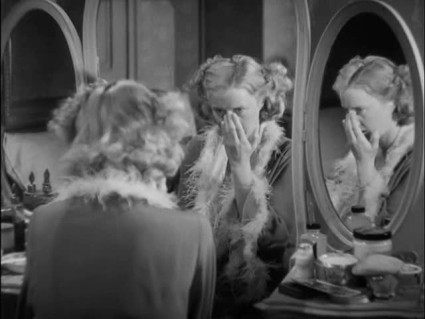
The last sequence is another example of emotion and cognition being mixed in an associative network of different shots. Here is a shot-by-shot breakdown of the sequence, with a clearly defined pattern of alternation between close-up/medium/medium long shot of Stella and close-up/medium/medium long point of view shots (POV) of what she is looking at:
1. It is night time and it is raining. A series of crowd shots of people carrying umbrellas. Stella appears within the crowd.
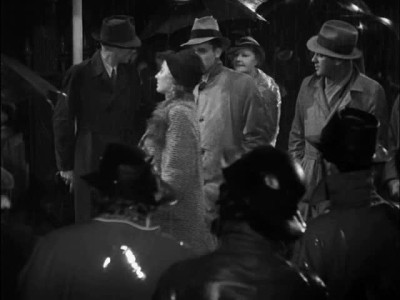
2. A LS of an open ground floor window in the background, with Stella and a few other people standing back to the camera behind a gate iron fence, looking into the window.
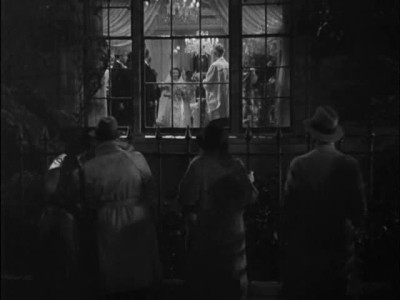
3. Reverse angle cut to a frontal medium long shot of Stella staring off-screen in the direction of the window.
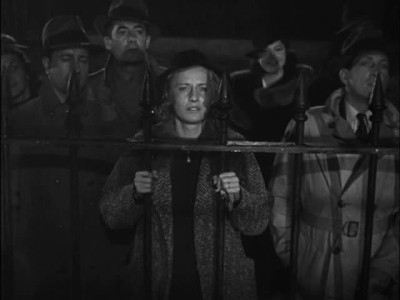
4. Stella’s MS POV looking into the window at her daughter’s wedding.
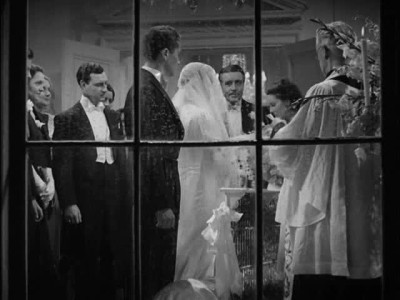
5. MS of Stella shot through the fence. Her head is now slightly tilted to her right, suggesting a heightened emotional engagement.
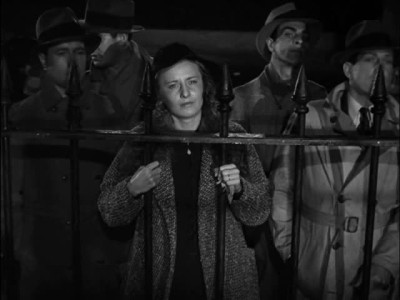
6. MS of the window, with the groom receiving his wedding ring. (POV)
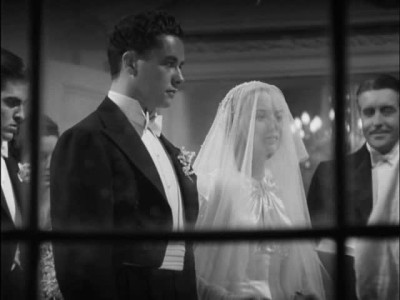
7. Close-up of Stella, tears swelling in her eyes.
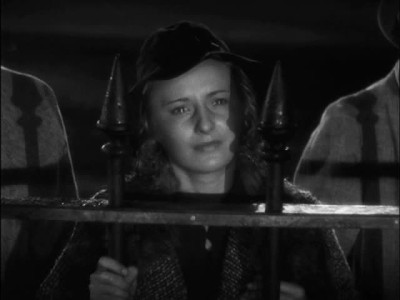
8. LS of the window, the bride and groom move to their knees in front of the priest. (POV)

9. LS from behind Stella, with the crowd moving behind her.

10. Reverse angle back to the MS of Stella. A traffic policeman asks her to leave, but she pleads for just a few more seconds.
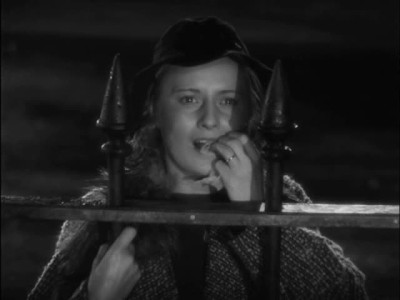
11. CU of Stella. As she moves her hand to her mouth, her wedding ring becomes visible.
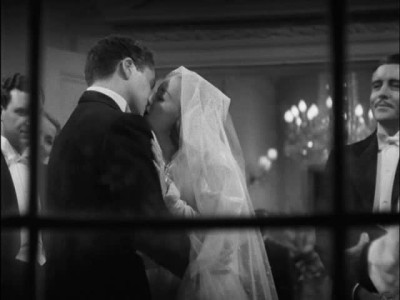
12. MS of bride and groom kissing. (POV)

13. CU of Stella, her face shows joy and pain simultaneously. The tears on her face become indistinguishable from rain droplets.
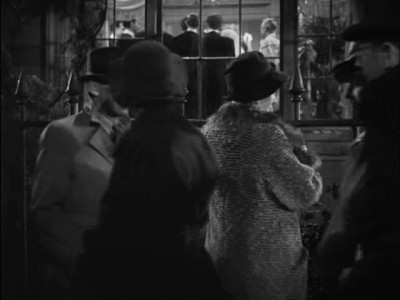
14. MLS from behind Stella. The police officer asks the crowd to dissipate. Stella begins to turn.
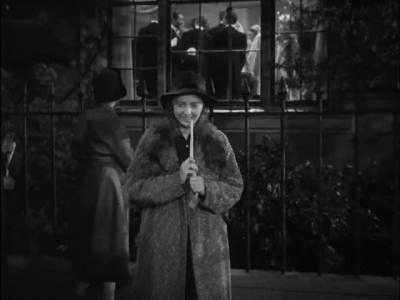
15. LS of Stella walking away from the fence/house. The camera begins to dolly back. It is raining. Stella is playfully tugging at a handkerchief she has placed in her mouth. Her face begins to show more joy than sadness. Her pace quickens. As her smiling face nears the camera, the image fades to black. End of film.
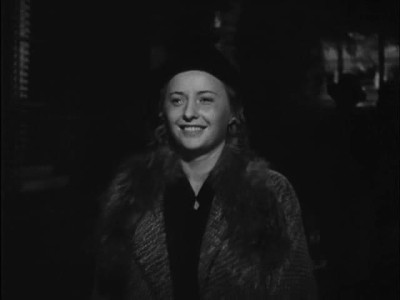
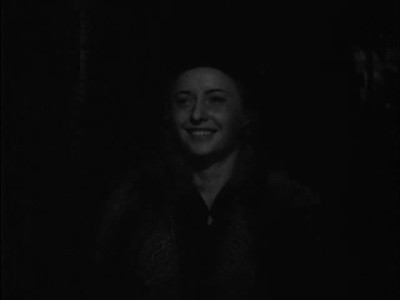
{media_18}
The whole sequence articulates the mixed emotions flowing inside Stella. The closer the marriage gets to being consummated, the more her pain turns to joy. We share in these emotions through a series of subjective POV shots. The rain adds to the depressive tone, in one shot (13) becoming part of the drama by blending with her tears. Stella is standing outside ‘alone’ in the crowd and watching her daughter being married. We see her wedding ring that keeps her tied to her daughter and perhaps her husband too; and yet, her life does not freeze here. Stella perseveres forward, picking up pace as she walks through the rain, a testament to her strength and courage. The final image in our mind is one of triumph, although mixed with a history of pain and sacrifice.
Audience members who cry while watching Stella Dallas are cognitively making a bridge with the emotion that is cemented in the flesh and blood of the film. An emotional bridge that is made possible as our cognition is aided by a set of schemata that we, as living in the community, have a share in.
References:
Amazon Customer’s Review. Available. December 12 2013.
Bordwell, D. “A Case for Cognitivism.” Iris, 9.Spring (1989): 11-40.
Bordwell, D. Narration in the Fiction Film. Madison: University of Wisconsin Press, 1985.
Bordwell, D. “Historical Poetics of Cinema.” The Cinematic Text: Methods and Approaches. Ed. R. Barton Palmer. Georgia State Literary Studies Number 3. Cambridge: Harvard University Press, 1989, pp. 369-398.
Brooks, V. “Film, Perception, and Cognitive Psychology.” Millennium Film Journal 14/15. Fall/Winter (1984): 105-23.
Buckland, W. “Michel Colin and the Psychological Reality of Film Semiology.” Semiotica 107.1/2 (1995): 51-79.
Cappella, J.N. “Why Biological Explanation?” Journal of Communication 46(3). Summer (1996): 4-7.
Clark, A. Being There Putting Brain, Body, and World Together Again. Cambridge, Massachusetts: The MIT Press, 1999.
Carroll, Noël. “Prospects for Film Theory: A Personal Assessment.” David Bordwell, and Noël Carroll in ed. (1996) Post-Theory: Reconstructing Film Studies, Madison: University of Wisconsin Press, pp. 37-68.
Dissanayake, W. “The Concepts of Evil and Social Order in Indian Melodrama: An Evolving Dialectic.” Melodrama and Asian Cinema. Ed. W. Dissanayake. Vol. 1. Cambridge: Cambridge University Press, 1993. 69-83.
Doane, Mary Ann. The Desire to Desire: The Women’s Film of the 1940s. Bloomington: Indiana University Press, 1987.
Hutchins, E. Cognition in the Wild. Cambridge: The MIT Press, 1999.
Kaplan, E. Ann. “Theories of Melodrama: A Feminist Perspective.” Women and Performance 1.1 (1983): 40-48.
Newell, et.al. “Symbolic Architecture for Cognition.” Foundations of Cognitive Science. Ed. In M. Posner. Cambridge: MIT Press, 1989.
Rumelhart, et.al. Parallel Distributed Processing: Explorations in the Microstructure of Cognition. Cambridge: MIT Press, 1986
Singer, Ben. Melodrama and Modernity: Early Sensational Cinema and Its Context. New York: Columbia University Press, 2001.
Smith, Greg M. “Local Emotions, Global Moods, and Film Structure.” Passionate Views: Film, Cognition, and Emotion. Ed. Carl Plantinga. Baltimore and London: The John Hopkins University Press, 1999, pp. 103-126.
Stoehr, K. L. “Introduction.“Film and Knowledge. Ed. Kevin L. Stoehr. Jefferson, North Carolina and London: McFarland & Company, Inc., Publishers. 2002, p. 1-16.
Williams, Linda. “Something Else Beside a Mother: Stella Dallas and Maternal Melodrama.” Cinema Journal 24.1 (1984): 2-27.



